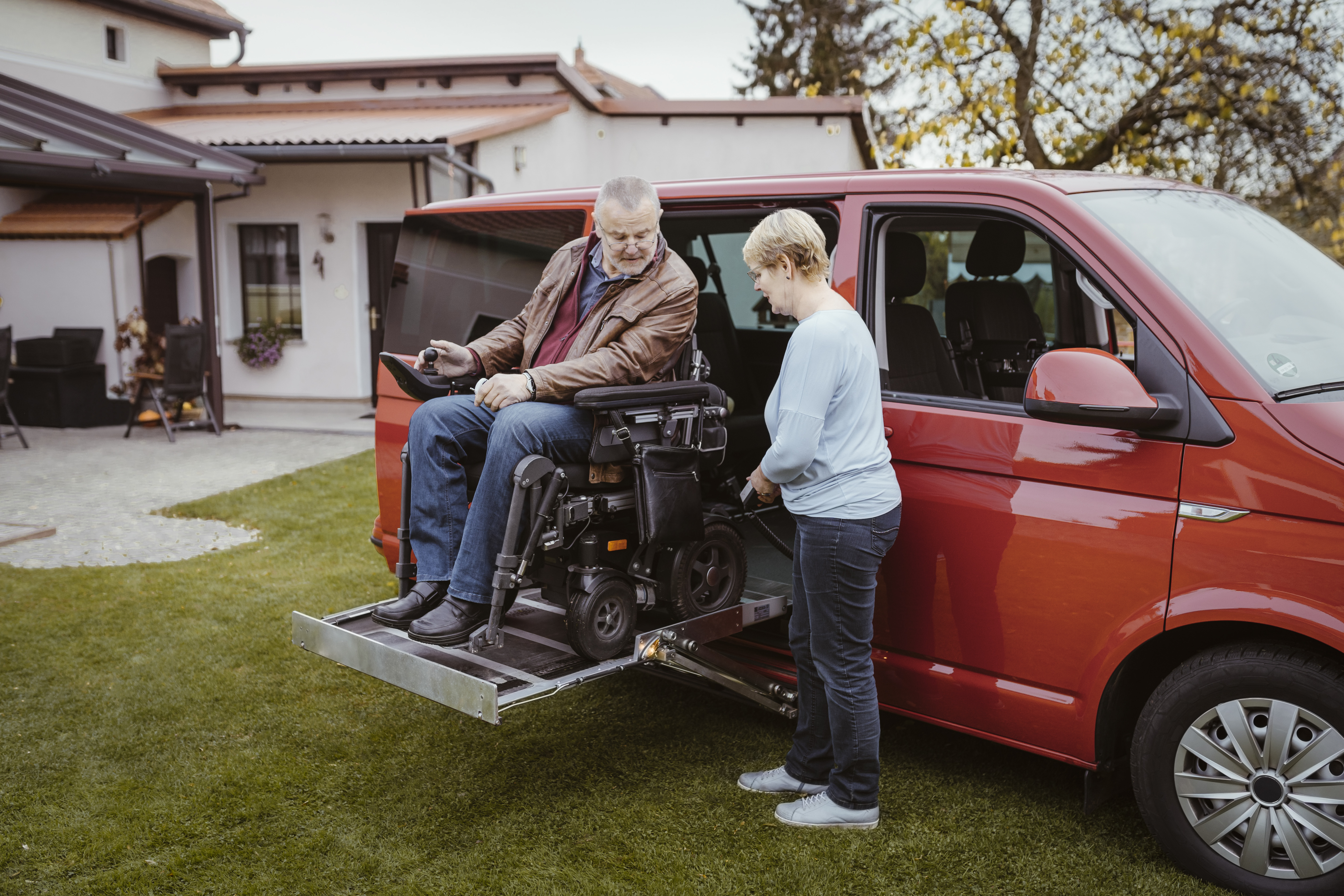
Looking for the right mobility solution can feel pretty overwhelming, especially when it comes to finding a wheelchair-accessible vehicle. Whether it’s for you or a loved one, this guide is here to make your search easier!
Learn more about the different types of wheelchair vans, how to pick the right one, and get answers to some common questions below.
What Is a Wheelchair Accessible Vehicle?
A wheelchair-accessible vehicle (WAV) is specifically designed to accommodate individuals who use wheelchairs. These vehicles are modified with ramps or lifts so users can enter and exit without leaving their chairs. You can also reconfigure them inside to provide plenty of room for moving around and securing your wheelchair during trips.
Types of Wheelchair Vans
Side Entry Vans
Side-entry vans tend to be the most popular choice. They allow wheelchair users to enter the vehicle from the side, which is particularly helpful for those who drive or have a caregiver. They typically offer two types of ramps:
- Fold-Out Ramp: This ramp extends from the side of the vehicle and is often equipped with side rails for added safety. It can be manually deployed or powered for convenience.
- In-Floor Ramp: This type of ramp is stored under the floor, which leaves a clear path when not in use for easy entry and exit.
Rear-Entry Vans
Rear-entry vans are designed for passengers who don’t need to drive. They tend to be more affordable than other options and require less maintenance because they have fewer parts. Additionally, since the ramp is located at the back of the vehicle, they’re easier to park in standard spaces because you don’t need the extra room on the side for deployment.
Full-Size Vans
For those that need a bit more space, full-size vans offer more room for larger wheelchairs and additional passengers. They often come equipped with lifts instead of ramps and can be customized with extra seating or luxury features.
Frequently Asked Questions
How Much Does a Wheelchair Van Cost?
The short answer is it depends on the type of vehicle, the level of modifications, and the brand.
New WAVs typically range from $30,000 to $80,000, depending on the model and specific features, while used ones are generally priced between $15,000 and $40,000. Just be sure to check that any used vehicle meets safety standards and is in good condition.
Will Medi-Cal Pay for a Wheelchair Van?
Medi-Cal, California’s Medicaid program, may cover some costs for wheelchair vans, but it depends on individual circumstances. If a healthcare provider determines that a WAV is medically necessary, there could be options for coverage.
It’s best to talk to both your healthcare provider and Medi-Cal representatives to understand what you might qualify for.
How Can I Pay for a Wheelchair Accessible Vehicle?
Many dealerships offer financing plans that allow you to spread out payments. Compare interest rates and terms to get the best deal.
Additionally, various organizations offer grants and funding for people with disabilities, so researching local and national programs can open up opportunities for support. If you’re a veteran, the Department of Veterans Affairs also has specific funding options that may help cover some of the costs of a wheelchair-accessible vehicle.
How to Choose the Right Wheelchair Accessible Vehicle
Choosing the right wheelchair van comes down to a few key points. Here’s what to keep in mind:
1. Know Your Needs
Before you start shopping for a vehicle, start by thinking about what it’ll need to have:
- Wheelchair Size: Measure your wheelchair’s width and height to ensure it fits.
- Driving Needs: Determine whether the wheelchair user will be driving or if a caregiver will be assisting them.
- Frequency of Use: Consider how often you’ll use the vehicle and for what — like daily commutes, longer trips, or special events.
2. Look Into Conversion Options
There are different types of conversions, so talk with a mobility consultant to find the one that best fits your lifestyle.
3. Test Drive
Once you have a few options, test drive them. Make sure entry, seating, and the overall feel of the vehicle work for you.
4. Consider Accessibility Features
Look for vehicles that offer additional accessibility features, such as:
- Kneeling Systems: These systems lower the car closer to the ground for easier access.
- Swivel Seats: These seats are helpful for transfers between a wheelchair and the vehicle.
Have Questions? Our California Complex Rehab Technology Specialists Can Help!
Call 800-980-5696 or contact us to set up an appointment or book a FREE consultation today.
November 27, 2024 by Freedom Mobility
Looking for the right mobility solution can feel pretty overwhelming, especially when it comes to finding a wheelchair-accessible vehicle. Whether it’s for you or a loved one, this guide is here to make your search easier! Learn more about the different...